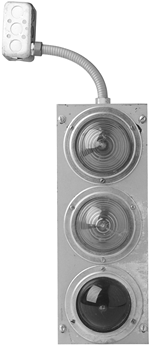Preparing for an Activity or Event
Some people thrive on
anticipation and preparation. They don't have too much trouble handling
this part of the scheduling. Other people focus on the event itself and
often find themselves running around at the last minute. A
smooth-running schedule must allow time for all of the preparatory
activity.
You may not be aware of it,
but getting ready for even the simplest of activities is really a
complex series of decisions and events. Some of them come very naturally
to you, so you won't need to schedule all of their details separately.
For example, when you set aside a half hour to shower and get dressed in
the morning, you probably don't have to break down the process
minute-by-minute into all of the following components:
Take off pajamas.
Adjust water in shower.
Lather.
Rinse.
Turn off water.
Dry off.
Apply deodorant.
Put on clothes.
Comb hair.
On the other hand, you may
have more success with some other activities if you take the time to
schedule their various components. For example, if you've received an
invitation to a birthday party that you plan to attend, you'll probably
remember to put the party on your calendar. But you should also consider
scheduling the following preparatory activities:
RSVP.
Buy a present.
Buy a card.
Wrap the present; make sure you have
Wrapping paper.
Ribbon.
Tape.
Select what you'll wear; make sure
It fits.
It's clean/pressed/mended.
Make sure you have
Transportation to the party.
Directions to the party.
Arrange for a babysitter (if necessary).
In general,
asking yourself the following questions will go a long way toward making
sure that you schedule all the preliminary steps to make the main event
happen stress-free:
- Do I have the necessary information to do this?
- If not, how can I get the information, and how long will it take?
- Do I have what I need in terms of tools, equipment, ingredients?
- If not, where will I get them, and how long will it take?
- Do I need to do anything in advance of the activity?
- If yes, when do I have to do these tasks, and how long will they take?
- Do other people need to be involved in preparing for this activity?
- If yes, when will they be available?
- Is there anything else I must do to be ready for this activity?
Participating in the Activity
The second aspect of
every scheduled activity is participation in the actual event. As long
as you remember to schedule the event at all, you don't have to worry
about skipping this phase. Instead, the challenge at this point is to
know how much time to allot for the activity.
You may feel that tasks
always take longer to complete than you think they should. They may be
taking too long for a variety of reasons. Lack of preparation is one
reason. But you should be well on your way to conquering this problem
after having read the previous section. Another reason is failure to
focus. Distractions and interruptions can erode time at an incredible
rate. Making sure the task is scheduled and then sticking to working on
the task during the scheduled time will help you accomplish your work in
a more reasonable amount of time.
caution
Although you want to set
and stick with an efficient schedule, you should be careful not to
schedule your time too tightly. Scheduling your activities so that you
have to do them at top speed and then rush on to get to the next item on
the list will result in the same harried feeling you get from not
having planned your schedule at all.
Estimating the Time You'll Spend in an Activity
So, how do you decide how much time to block out for a particular activity? Follow these steps:
1. | Estimate how much time you would need to complete the task at your absolute top speed with no interruptions.
|
2. | Estimate how long you would need to do it at normal speed with a normal number of interruptions.
|
3. | Add the estimated times together and divide by two.
|
This formula will give you a
number that's longer than the time you will need for many things after
you have your schedule well in hand, but it will be a good time frame
from which to start.
|

Watch out for these common ways of underestimating the time you will need to get someplace:
Many
people and businesses make claims like “We're 15 minutes from
downtown.” These optimistic times don't take into consideration traffic,
red lights, or the time you need to park your car and walk to where you
really need to be for your appointment. Mapping software is notorious for stating estimated travel times that are too low.
|
Making Good Use of Leftover Time Fragments
Here are some suggestions of good items for your fill-in-the-gap list:
Write a note to a friend.
Phone a friend.
Play a game with your child.
Water your plants.
Sew a button.
Read a magazine.
Clean out the glove box in your car.
Balance your checkbook.
Check last night's sports scores.
Take a walk.
Or, occasionally, you can just reward yourself by putting your feet up for a few minutes.

Estimates
indicate that the average office worker is interrupted from what she is
doing eight times an hour. The average interruption takes 6 minutes
from start to finish. That 6 minutes includes the time to switch focus
from what she was doing to the interruption, to deal with the
interruption, and to return her focus to the original task. This
situation is analogous to stopping for a red light: There's the time to
decelerate and stop, the actual time while stopped at the red light, and
then the time to start and accelerate back up to your original speed.
If the office worker does nothing to reduce these interruptions, that
means 48 minutes out of every hour are spent on something other than the
primary task. With only 12 minutes an hour being spent on what she set
out to accomplish, it's a matter of simple mathematics to figure that a
one-hour job will take five hours to complete.